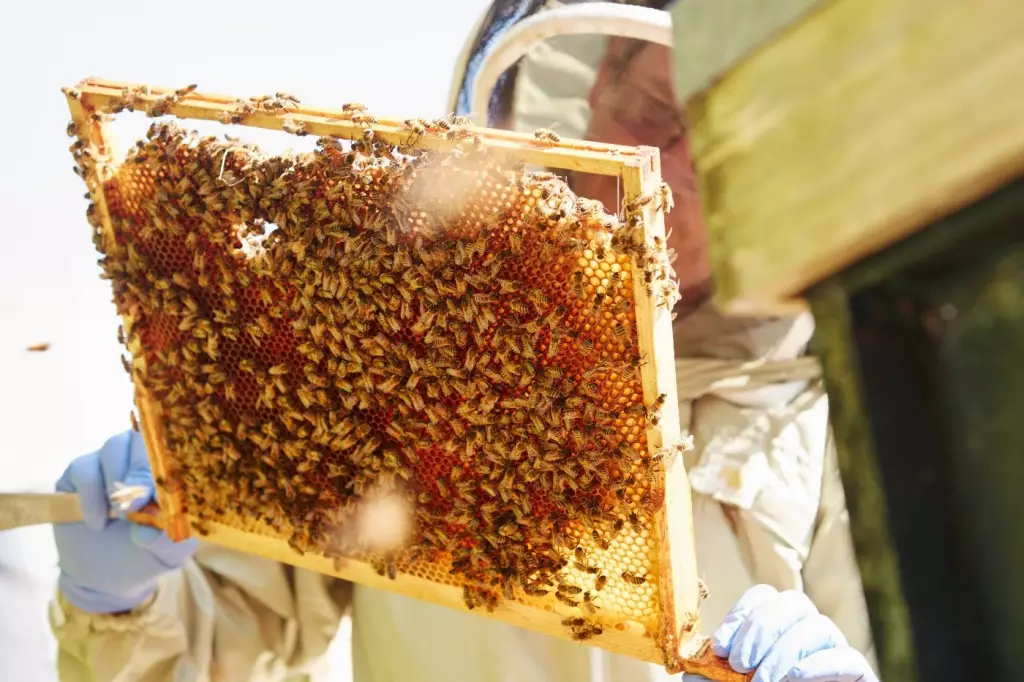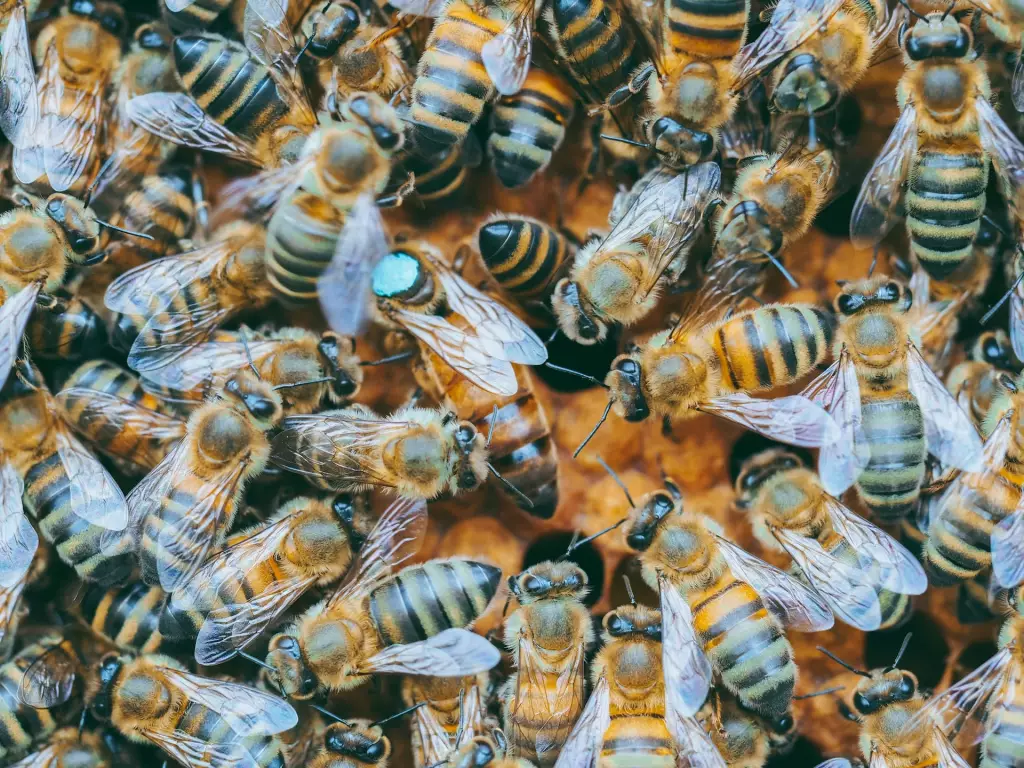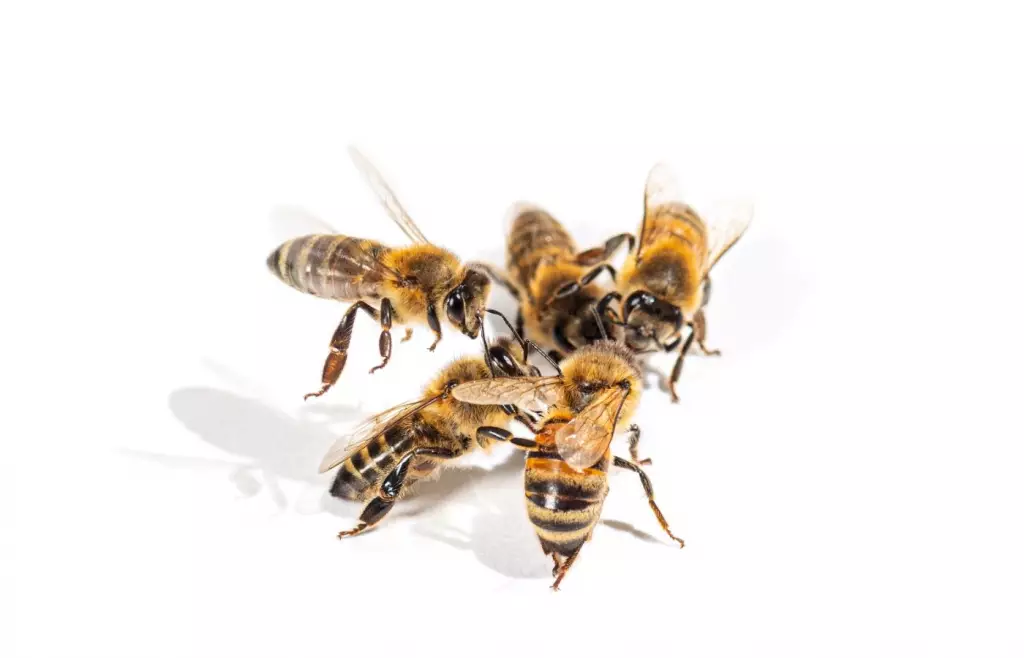17 Interesting Facts About Queen Bees You Probably Don't Know
The most important bee in the hive is the queen. She is the mother of the hive—the bee who gives birth to every other bee in the hive. Although she starts out like any other larva, she is fed a special diet in order to be raised to the position of queen. Let's discover other interesting facts about queen bees that you probably don't know.
There is only one queen in a beehive. She lays up to 2,000 eggs each day. Before being the sole reproductive female, the queen has to fight the other virgin queens using her stinger. Her pheromones keep the colony working harmoniously. Queen bees always leave with a swarm. New queens are reared in queen cells.
The queen does not necessarily rule the hive, but all the activities in it are directed to her since she's the only bee that can continue growing the population. All the work is being done by the worker bees.
Summary
- The queen's pheromones prevent worker bees from attempting to lay eggs.
- Old queen bees leave with the prime swarm, while virgin queens leave with after-swarms.
- Queen bees can live from two to six years, depending on their health, the weather, and other conditions.
- The queen bee should not mate with her own drones; otherwise, the brood will have abnormalities.
- After mating, the queen bee spends the rest of her life laying eggs and never leaving the hive, except when the colony decides to swarm.

Interesting Facts About Queen Bees
Despite being larger than the workers, honey bee queens are hard to distinguish from the thousands of worker bees by the human eye. Because of this, beekeepers mark queens on the thorax with a dot of special bee paint.
If the queen is removed from a hive, all bees will be alerted to the situation within 15 minutes, and will hustle to find a replacement. Let's learn more about the unique role the queen honeybee plays in a hive by reading these interesting facts.
The queen bee is the largest bee in a beehive
A queen bee may be difficult to locate because she is the largest bee in the hive. If you're looking for her, the queen bee is larger than the workers. She has a much longer abdomen than the rest. In addition, most beekeepers would paint their queen's thorax to identify her in a hive of 60,000 to 80,000 bees because she is difficult to spot in such a large colony. The paint does not harm the queen in any way, but it makes it simpler for them to identify her.
The queen bee does not rule the hive
It's a common misconception that the queen bee runs the hive by directing worker bees around like a monarch would. The beehive is more comparable to a democratic structure, despite the fact that she does have some control over the actions of the worker bees.
Pheromones and other chemical signals appear to occur automatically, controlling a large portion of the hive's daily activities. The worker bees cast votes when a conscious choice is made, such as the selection of a nesting location by a swarm.

The queen bee uses pheromones
Queens use pheromones called the queen's scent to command and coordinate their workers. With the queen pheromone, the bees are informed that she is healthy and alive.
The scent releases once the queen begins to lay eggs two or three days following the mating ritual, indicating that she is healthy and capable of performing her role as queen. The worker bees use this pheromone to determine when to produce a new queen. As the queen gets older, this pheromone or scent marker will lessen.
These pheromones are circulated throughout the hive by the worker bees, which interact with the queen. The worker bees begin to get ready for a new queen if the pheromone level drops.
Queen bees have stingers
The smooth stinger of a queen is reserved solely for use in conflict with other queens. The stinger of queen bees is longer and unbarbed, which she uses to fight for dominance of the hive. The existing queen frequently approaches and kills her opponent if she notices a new queen leaving her incubation chamber. The colony's stability is preserved in this way.
After using their stingers, bees lose them. Because the queen's stinger lacks barbs like those of her worker bees, she can use it again. This is particularly helpful in the first few minutes after she leaves her cell. She kills and destroys other potential queens with her stinger.
The queen bee can live up to six years
Healthy and strong queens can live up to six years, but after the first year or two, their production usually starts to drop. While some beekeepers believe it desirable to change their queens every year, others only do so when the queen is lost or deteriorating. Queen replacement rates among commercial beekeepers might reach twice annually.
The queen bee is the only reproductive female in the colony
The queen bee is bigger than worker bees because her larva is provided with additional royal jelly so that her reproductive organs can grow. The female larva transforms into a queen when she only consumes royal jelly, activating her reproductive system.
After emerging, a virgin queen stays in the colony for five to eight days to be fed by nurse bees, which enables her reproductive organs to develop and her flight muscles to get stronger in time for mating flights.

Queen bees develop in queen cells
Each queen bee grows in a unique honeycomb cell called a "queen cell," which resembles a peanut in shape. The worker bees will cap the cell when the queen bee larva is prepared to pupate (metamorphosize) into a queen, at which point she will transform inside.
When the queen is fully developed, she will gnaw her way out of the cell with help from a few workers on day 16. She will then use the tiny hatch door she created by cutting a circle all the way around the bottom of the queen cell to chew her way out.
Queen bees emerge in 16 days
By gnawing through the wax cap that was used to seal her cell on the ninth day, the future queen emerges via the queen cups on day 16. The other queen cups that could contain future queens may still be present, depending on the period.
The newly emerged queen will kill her sisters with her sting at that point, leaving her as the sole survivor. If more than one queen bee hatches at the same time, they will fight it out until only one queen survives to rule.
Only the future queens are continued on a special diet
The future queen bee's diet is royal jelly, the only food they are given. What genuinely distinguishes the future queen bee from the others is the absence of pollen and honey from their diet.
Worker bees are the result of pollen and honey being fed to fertilized larvae. For the first few days, they are given royal jelly; after that, they are switched to bee bread, which is made of pollen and honey. The worker bees' reproductive system then contracts, rendering them sexually immature.
The queen bee will perform a nuptial flight within the first week of emerging
A mating flight at a drone location, where thousands of males are waiting, is attended by the new queen once she has mastered the hive.
Drones can detect a queen's presence by smelling her, but they can only find a queen by sight. In midair, drones and queens mate, and drones pass away shortly after providing the queen with their sperm. In each mating flight, queens mate with many drones and store their sperm in their spermathecas.
Due to her large sperm reserves, which enable her to produce millions of eggs over the course of her lifespan, the queen bee mates at a young age and often only attends one mating flight.
Queen bees will mate with many drones
The mating ritual will start as soon as a new queen emerges and if the conditions are favorable. When the queen bee is in flight, drone bees swarm around her and mate with her at a location known as a "drone congregating area."
12 to 15 drones can mate with the queen bee at once. She might go back to the same location repeatedly until she is totally mated, depending on the weather. For the next two to six years of her reign as queen, the queen bee will use the six million sperm she can store in her spermatheca to fertilize her eggs.

The queen bee can lay up to 2,000 eggs per day
The queen honeybee may produce significantly more eggs per day than any other known solitary or primitively eusocial bee, up to 2,000 eggs per day. Their extraordinary fertility, which enables a single mated female to generate enormous families of up to more than 50,000 worker and drone bees, is thought to indicate an evolutionary selection for higher fertility.
Queen bees store sperm in a structure known as the spermatheca, which allows them to control the fertilization of their eggs. Thus, queen bees can lay eggs that are either unfertilized or fertilized.
The queen bee settles in the hive for the rest of her life after mating
In a functioning hive, the queen bee is rarely observed outdoors and doesn't frequently need to fly. She continues to lay eggs while staying deep within the comb and receiving care from the worker bees. Once suitably mated, the queen will live out the remainder of her days in that hive.
When the queen reaches sexual maturity, she mates many times before spending the remainder of her life laying eggs and never leaving the hive. She is fed and cared for by the worker bees so that she can concentrate on her primary function, which is to lay eggs without ever leaving the hive to go foraging for nectar and honey.
When young queens go on mating flights in search of male bees, it is one of the rare times when they leave their hive. Swarming is also a time when queen bees go outside the hive.
Queen bees leave with a swarm
Space within a hive may become limited due to the queen's ability to lay up to 2,000 eggs every day. The adult queen and half of her workers depart the colony as a result of a swarm and start a new colony. With a new queen in charge, the other half of her workforce continues to work in the old colony.
There will come a moment when the hive is heavily populated with individuals. This could cause the entire colony to decide to swarm. While worker bees create the queen cups, the queen will continue to lay eggs. The queen will be starved by the workers as well, which will make her lighter and enable her to fly.
When the queen is prepared, she will swarm and move to a temporary location with about half of the bee population in the hive before they can build their new home. They go by the name of prime swarm. The next swarm will thereafter be referred to as an after swarm. After-swarms can occur with a virgin queen leaving with them.
New queen bees battle against old queen bees
Typically, the old queen and other bees would have already left the hive in search of new pastures. This old queen will continue to lay eggs and survive for a few more weeks.
Sometimes a new queen arises while the old one is still in the hive. When this occurs, a battle to the death will occur, with the victorious queen emerging for the throne.
The queen bee can stop laying eggs
Her ability to produce fertilized eggs will deteriorate as she gets older, and she will produce less queen pheromone and infrequent fertilized eggs.
Honey bee queens lose some of their egg-laying capacity as they get older, and they also tend to lay their eggs in less regular patterns. Workers will prompt an old queen's replacement or supersedure when she starts to struggle with carrying out these duties. Following the supersedure procedure, the aging queen is killed.
Although a queen can produce up to 2,000 eggs per day during busy seasons, the quantity and rate of egg production are strongly influenced by the weather, the availability of food, and the unique habits of the queen's subspecies of honey bees.

New queen bees will be raised by worker bees
The worker bees pick newly hatched larvae when it's time for a new queen. They will start the process of rearing new queen bees when the honeybee colony recognizes that it needs a new queen, perhaps because the current queen is unwell or getting ready to swarm. Lower amounts of queen pheromone in the hive start this process.
A strict diet of royal jelly, a milky white material that bees make from the tips of their heads, is fed to 10 to 20 freshly hatched female larvae by nurse bees. Selecting larvae that will become queens is influenced by a variety of factors. When it is possible, nurse bees do choose their full sisters as future queens. The larvae that have received the best nutrition will also be given preference.
Although many consider the queen honeybee to be the most significant member of her colony, worker bees occasionally identify when their colony requires a new queen. They produce a new queen as a result of swarming—a determination by the colony as a whole that the current queen is inappropriate and has to be replaced—aging-related performance issues, and the untimely death of the queen.



